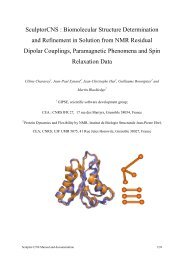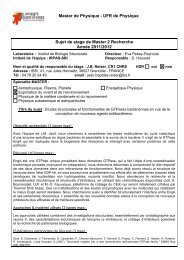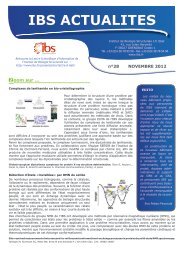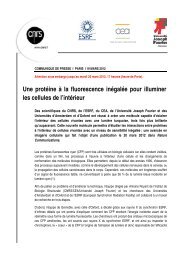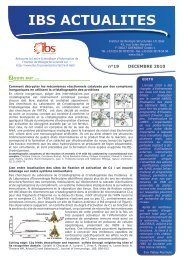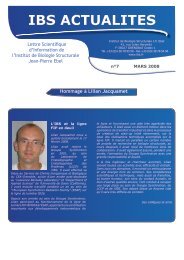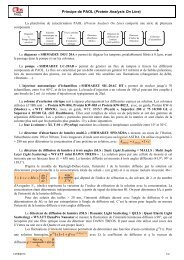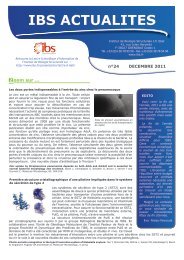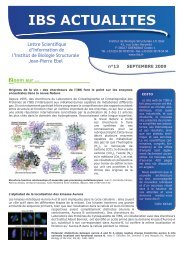OMPX Mathilde Lethier , Martine Moulin , Michae - Institut de ...
OMPX Mathilde Lethier , Martine Moulin , Michae - Institut de ...
OMPX Mathilde Lethier , Martine Moulin , Michae - Institut de ...
You also want an ePaper? Increase the reach of your titles
YUMPU automatically turns print PDFs into web optimized ePapers that Google loves.
Protein purification was done with ~1/10 of the whole available cell paste, i.e. ≈ 6<br />
grams. The protocol very similar to that <strong>de</strong>fined for the hydrogenated protein can be used to<br />
purify the protein. However, the cell lysis is less easy. The solution of the resuspen<strong>de</strong>d cells is<br />
more viscous. Thus, a spatula tip of lysozyme (Eurome<strong>de</strong>x) is ad<strong>de</strong>d to the lysis buffer and<br />
the solution is incubated during 20min at room temperature un<strong>de</strong>r vigorous stirring before<br />
lysis using the microfluidizer apparatus (Microfluidics M-110P). The second indicative<br />
difference when compared to the purification of the hydrogenated protein is the solubilisation<br />
step of the inclusion bodies in urea. About 25 % of the proteins are lost. Fortunatly, a major<br />
part of the lost proteins concerns contaminant proteins. Figure 5 shows that D-OmpX at 17<br />
kDa is mainly solubilised whereas the pellet contains contaminants (e.g. at 36 kDa).<br />
We tested the refolding condition with different <strong>de</strong>tergents (Zhang et al. 2008) in the<br />
same way as we did for the H-protein. Deuterated OmpX presented the same refolding<br />
properties (Figure 6, to be compared with Figure 1).<br />
Next steps: refolding, purification on Ni-NTA column and <strong>de</strong>salting were the same as<br />
in hydrogenated conditions. The pure D-OmpX obtained was refol<strong>de</strong>d at 90% (Figure 7).<br />
From Table 1, the purification yield from the inclusion body step is not significantly different<br />
for the hydrogenated and <strong>de</strong>uterated proteins. MALDI TOF was used to evaluate the<br />
<strong>de</strong>uteration level. OmpX and D-OmpX shows some heterogeneity with three closed peaks<br />
separated by 186 Da, with two main peaks being 17411 and 17597 for OmpX, and 18006 and<br />
18196 Da for D-OmpX, to be compared to the theoretical values of 17556 and 18407 (100%<br />
6



